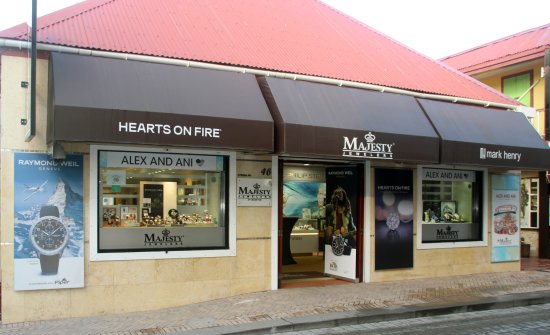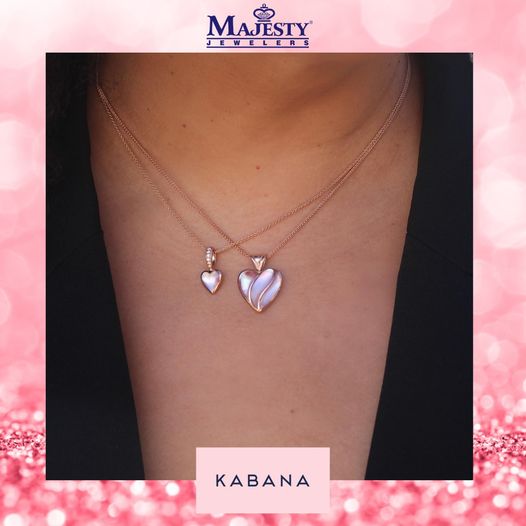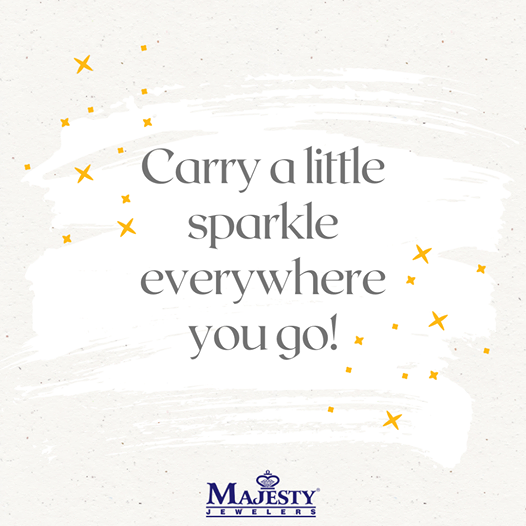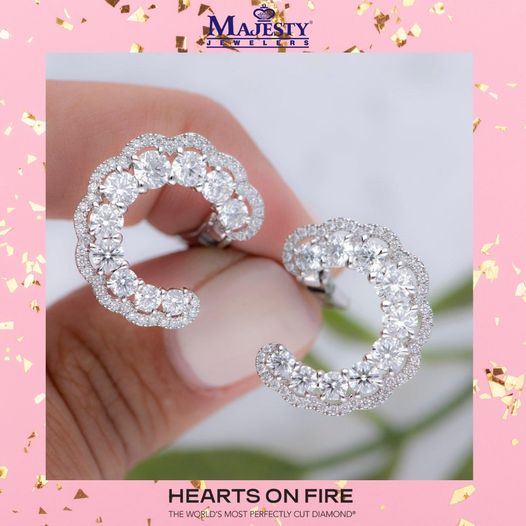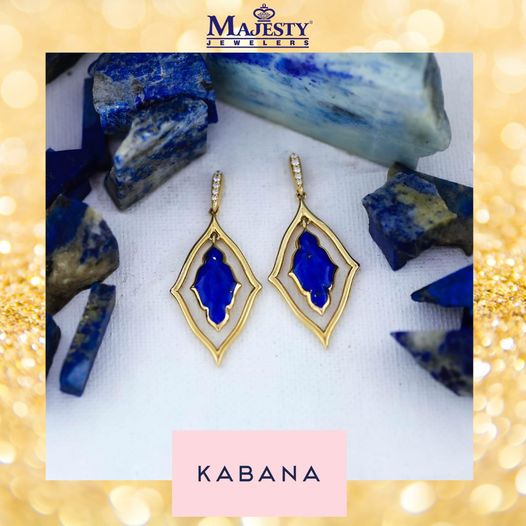Time to Learn: Unveiling Watch Basics
EVERYTHING YOU NEED TO KNOW ABOUT WATCHES
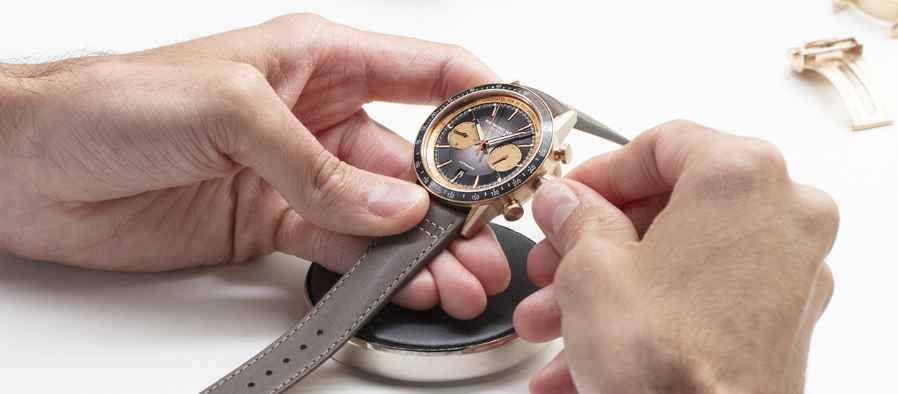
What is a watch?
The stupid question isn’t it. Who doesn’t know what a watch is? We all know it is something that shows the current time of the day and is either worn on the wrist or kept in the pocket, with the help of the chain attached to the watch and the waistcoat, lapel, or the loop of the belt, and in the yesteryears, there were watches worn on the fingers as the rings and on the necks as the necklaces. But do you know why it is called a watch? Well, since the word “watch” in the English language means to be vigilant or alert so being functional for that it was to help people to keep track of the time/appointment and their daily routines.
Difference between a Watch and a Timepiece
So if you have been shopping for the watches or reading and or indulged in the conversations with the watch experts/ watch aficionado you would have heard the term “TIMEPIECE”. In layman’s terms, it is a synonym of the watch but for the watch connoisseurs, they are completely different. Well, we now
know what is a WATCH so now let’s see what a TIMEPIECE is. Remember it is not something that has to be very expensive or a collector’s item, it has to be something that reflects your personality. Now to reflect on your personality you choose something that has to do with your personal choice for Style & Design, the quality of the overall piece, and the price/ value. Now if you did take time in doing homework and deciding on the watch that you want and would wear very often, if not every day, it will naturally have your love and emotional value it will be your TIMEPIECE and not just a watch.
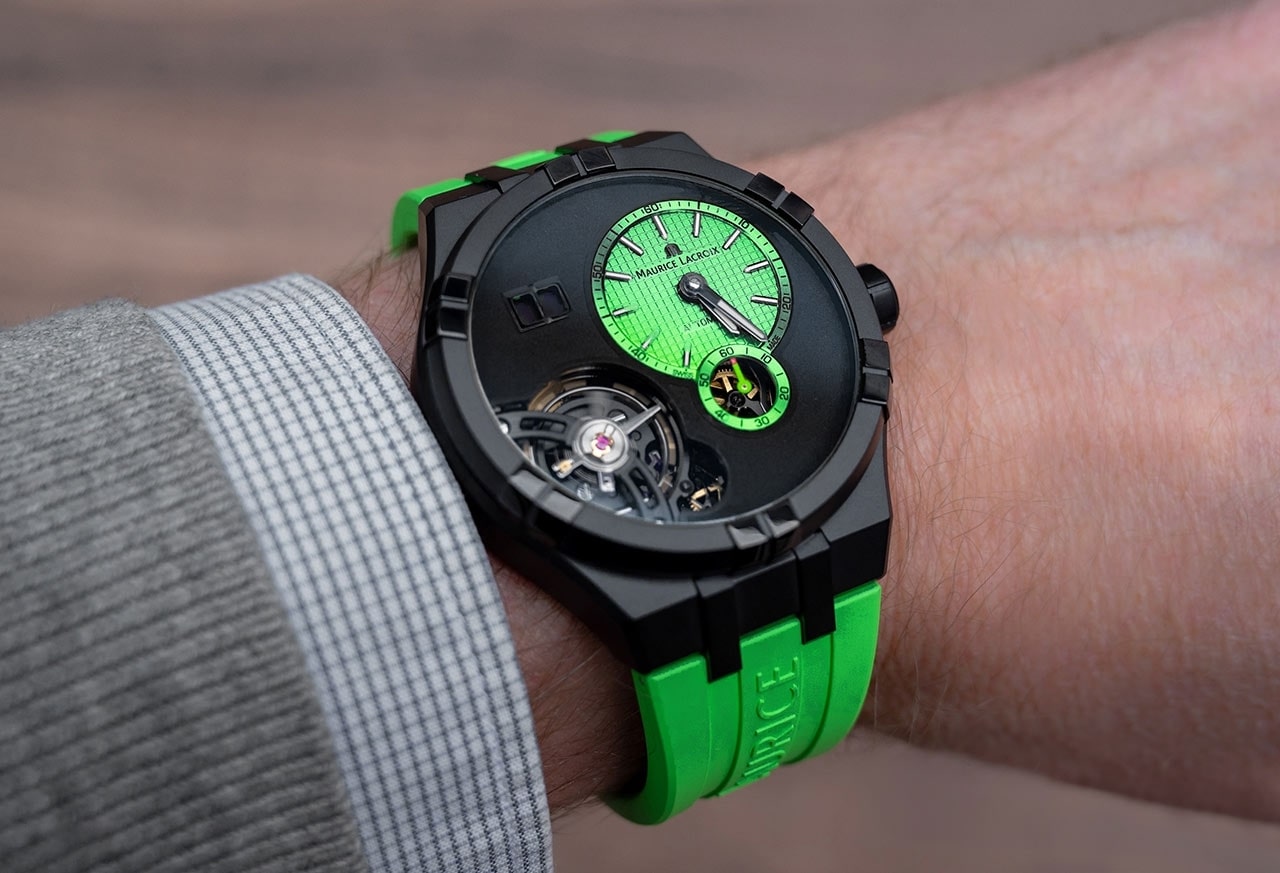 AIKON Master Grand Date Green Timepiece
AIKON Master Grand Date Green Timepiece
Parts of the Watch
So basically externally the watch consists of the FACE (dial) that sits on the case of the watch, and the strap or the bracelet that will tie it on the wrist. The material with which the case and the bracelet are made will make a quite impact on the price and look of the watch. The case is primarily a container that encases the movement of the watch. The face of the watch is covered with a glass called crystal and the ring that holds the crystal with the case is called a bezel. The case also has two projections called LUGS which secures the strap/bracelet with it. On the side, it has a button called CROWN with which the time and day/date can be adjusted. But internally it has hundreds of smaller parts which collectively along with the movement are called the engine of the watch and are responsible for efficient functionality.
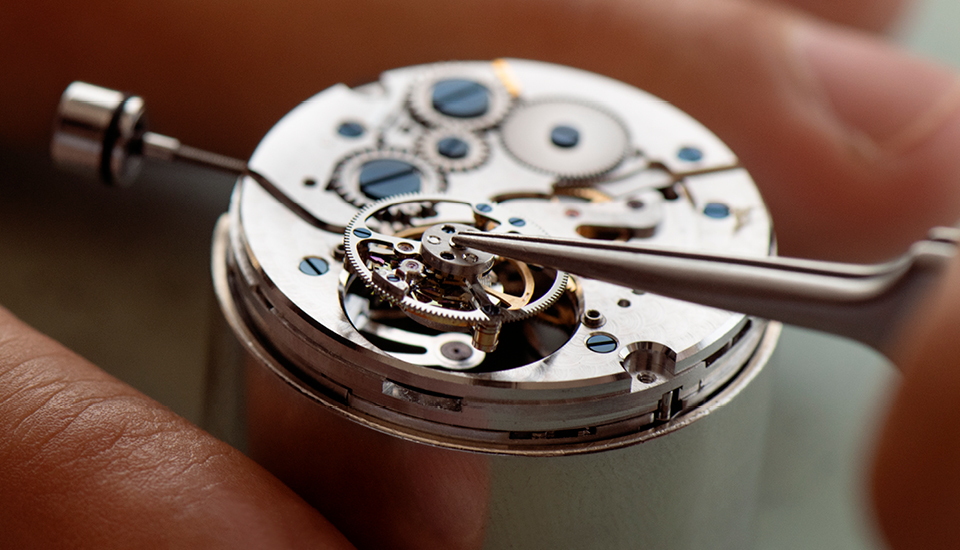
How do watches work/Types of Movements?
The movement of the watch, also known as the brain, is very well protected inside the case and is the powerhouse of the watch enabling it to work efficiently for a much-extended duration. It gets the interior mechanism move/work which would, in turn, make the hands move on the face of the watch and hence show us the time. Depending on the source of power the movements are categorized as:
- QUARTZ MOVEMENT :
This is the watch that needs the battery to work. It has a crystal of quartz that oscillates, integrated into the electric circuit which gets power from the battery, with the help of fixed low frequency generated by the magnetic coil and helps to move the hands of the watch. These types of watches are quite precise in time keeping like your alarm clocks. The quartz movement watches are valued as per the origin of their movements, i.e., if the quartz movement is Swiss (example ETA) they will be far more superior to the movements from Japan (example Citizen) which are better than the movements from China. The easiest way to know if it is a quartz watch is to see the “SECOND HAND”, the thinnest hand moving rather swiftly, where it will move with a bit of a pause.
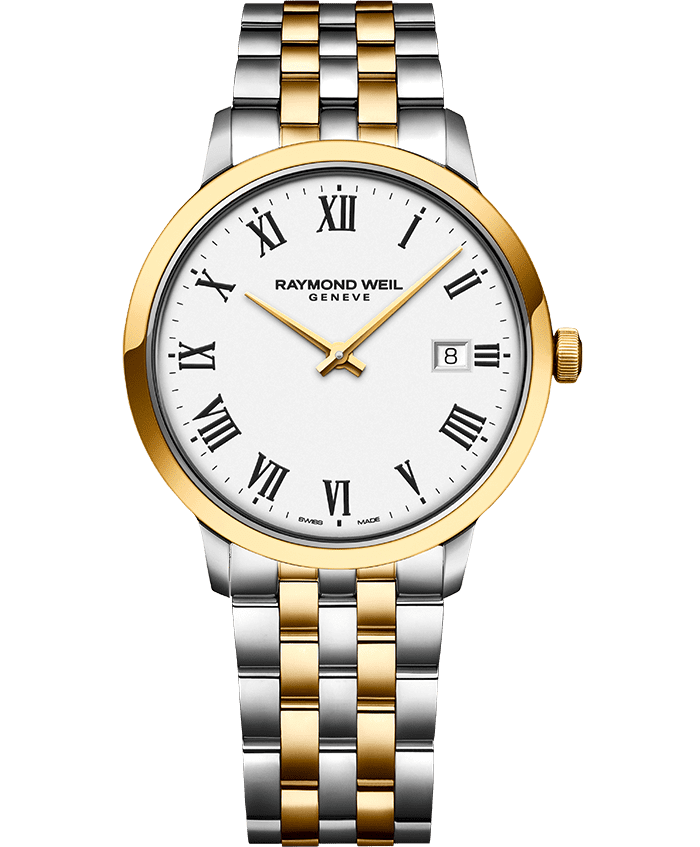 Two Tone Gold Raymond Weil Timepiece
Two Tone Gold Raymond Weil Timepiece
- MECHANICAL MOVEMENT :
One of the most revered and the marvel of the watchmaking is the mechanical movement. It has the mainspring (coil) that needs to be wound with the help of the crown and slowly when it unwinds (say between 24-36 hours) it will, with the help of gears, power the balance wheel (a wheel that will oscillate back and forth at a constant speed) which in turn will make the hands move. Due to this power which is supplied to the watch by turning the crown, manually, it does not need a battery. The “SECOND HAND” here moves very smoothly without a pause distinguishing itself from the quartz movement. So they have to be wound at least once a day to keep them ticking (the ticking sound is produced by the movements of the tiny gears). They might not be as precise as the quartz watches due to the fact the oscillation of the balance wheel experiences external environmental conditions such as temperature, shock, and gravitational force depending upon the position of the wrist.
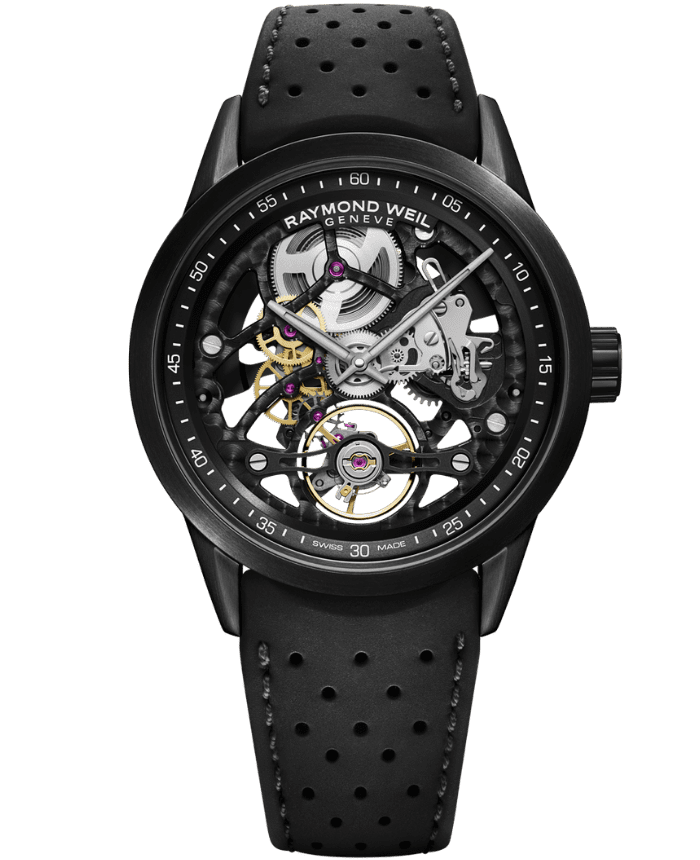 Freelancer Black Skeleton Watch
Freelancer Black Skeleton Watch
- AUTOMATIC MOVEMENT :
Also huge favorites for the collectors and connoisseurs they are similar in the functioning as the above with the only difference being that after winding them for the initial use they will keep on getting wound by the movement of your wrist. These watches have a semicircular disc called ROTOR, a free bidirectional moving plate, which moves with the movement of the wrist, and with every move, it winds up the mainspring and keeps the watch running for at least 48-72 hours when put aside so sparing the wearer to wind it.
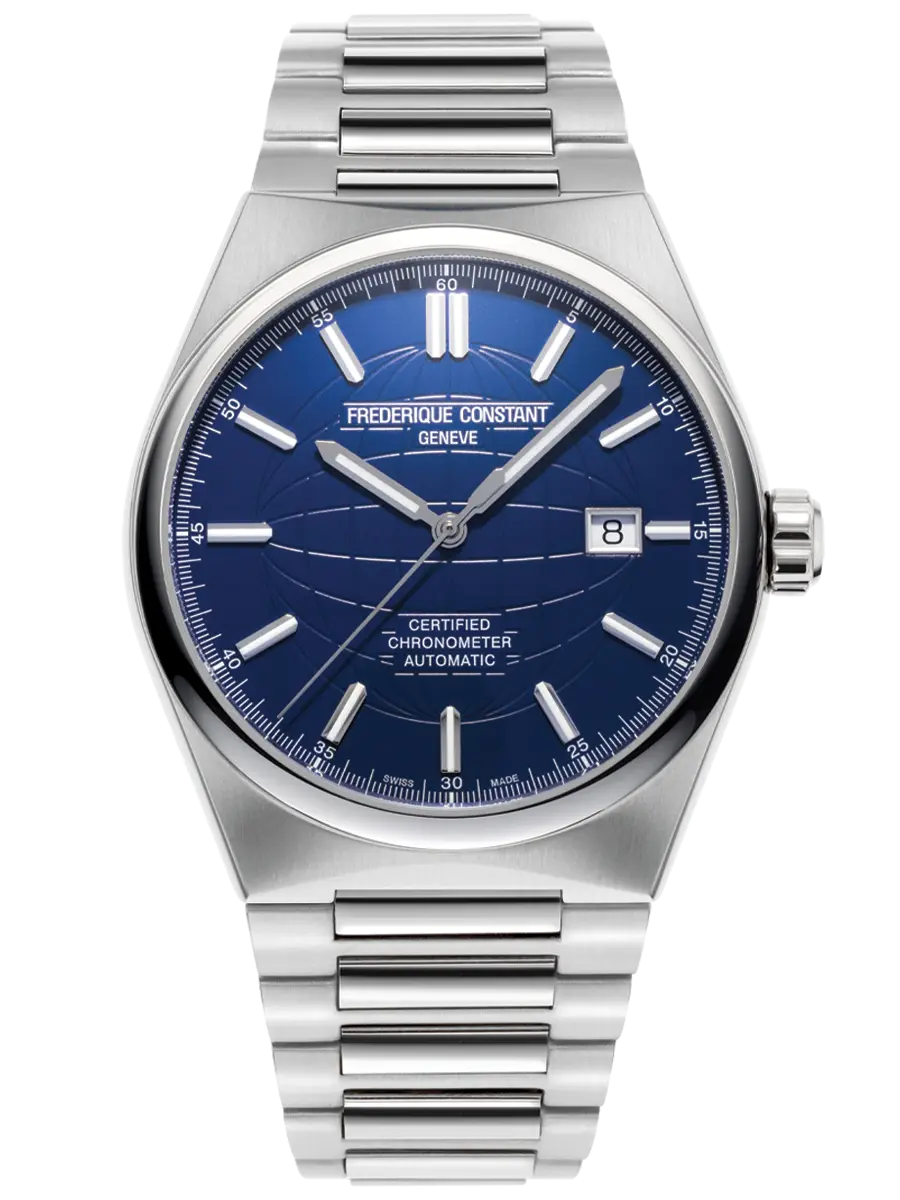 Frederique Constant Swiss Automatic Watch
Frederique Constant Swiss Automatic Watch
Water Resistance
This is one of the very most essential factors in choosing your watch. When you wear your watch you do not want to “babysit” it during the rain or when exposed to the water. The ability of the watch to handle exposure to water is called the resistance. There is a seal that lies between the movement and the inner case that protects the water from entering the movement and corroding it and eventually making it stop working. The unit to measure that ability is either in Ft, Meters, ATM
(atmospheric pressure, expressed in BAR). So if you get 300 Ft/ 100 Meter/10 ATM (these are the equivalent of the same depth) it will not mean that you could go to a depth of 100 M in water. It would mean that you could go for casual swimming since when during swimming your arms splash the water and with the result the pressure increases on your watch so it possible that at 1-meter depth it might be experiencing the pressure which is constant at 10 meters. Depending on your life
cycle you could get watches water-resistant up to 1000M.
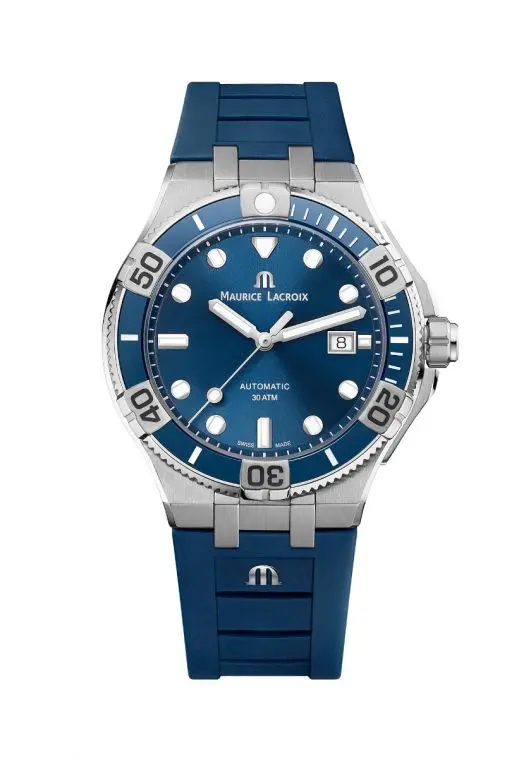 AIKON Maurice Lacroix Divers Timepiece
AIKON Maurice Lacroix Divers Timepiece
Scratch Resistance
Scratch resistance is the ability of the crystal/ glass on the face of the watch to shield itself from getting scratched. Diamond is the hardest known substance with a hardness of 10 on the Mohs scale with Sapphire and Ruby being the second hardest with a hardness of 9. So if the glass is made with synthetic sapphire it will be scratch resistant, scratched by only either by diamond or Sapphire and Ruby and called fitted with Sapphire Crystal glass. The second category is the Mineral crystal. It is made up of ordinary glass but treated, with heat or chemicals, to withstand scratches. The lowest one would be the plastic crystal. The better the quality of the crystal the better clarity of the face and easiness in reading the time.
Which Watch is right for me ?
Now, this is a very personal question and very much depends on your lifestyle and personality. A few things to take into considerations would be:
- The purpose of the watch is casual, every day, or dress-up
- The shape of the face, i.e., classic round, square, rectangle, oval, or even double dial (Philip Stein makes the double dial watch called Signature Collection)
- The choice between the strap and bracelet. The strap could be leather (black, brown, white, blue, etc.,) or rubber. The bracelet could be all steel, all gold (plated or solid), or two-tone (a mixture of steel and gold). Remember most of the watches now use 316L steel (surgical quality) and are generally hypo-allergic.
- The price you want to pay for a watch (don’t expect to get all the premium features at a very low price).
- As suggested by Experts in case of in dilemma get the round face with all-steel or two-tone and 100 meters water resistant with sapphire crystal glass and you are good to wear it for casual and dress up.
Difference between the price and value of the watch
There is a fine line between the value and the price of the watch. If it is your first watch or if you are not a watch enthusiastic then, of course, you go with how much you want to spend, i.e., the current value of the piece. But for the collectors, always compare the price (current amount being paid today) versus the value (the resale value in the future). One of the foremost factors is the number of watches produced by a brand in a year. If it is mass-produced (mostly all the Japanese & Chinese brands) it is very unlikely that there would be any resale value or demand in the future but if the brand manufactures a limited number of watches, due to very meticulous process during manufacturing and very strict quality control, the demand for those is always more than the supply and hence the resale value is quite lucrative in the long term.
Collectors Value
If you are a collector and on your way to start one then there are few things that you have to bear in your mind to make your money and time worthwhile. Among the few things that will play a big role for your collection, and make your watches Vintage in the future, are to invest in the BRAND that is not mass-produced, has a history behind it, is well respected and prestigious. Also, choose the particular model that is being sought after at present (remember not all the models are always a HIT) as there would be lots of people who wanted that model but for some reasons or others could not get it. Secondly, try to get the limited editions or special edition watches. Limited edition watches are the one that has been made in such a small quantity that they have been individually numbered (like 1/250) while the special edition is something that has produced for a limited time for a special occasion and is not necessarily numbered. The fewer the number produced the higher the resale/collector’s value it would fetch in the future.
Discover this world of fine craftsmanship with Majesty Jewelers
In the center of St. Maarten, Majesty Jewelers invites you to discover this world of fine craftsmanship and elegance, where each watch's tick is proof of human brilliance and creativity. May you discover the hidden wonders that adorn your wrist as you set off on your trip through the world of watches and timepieces and capture the essence of the moments that will define your legacy.


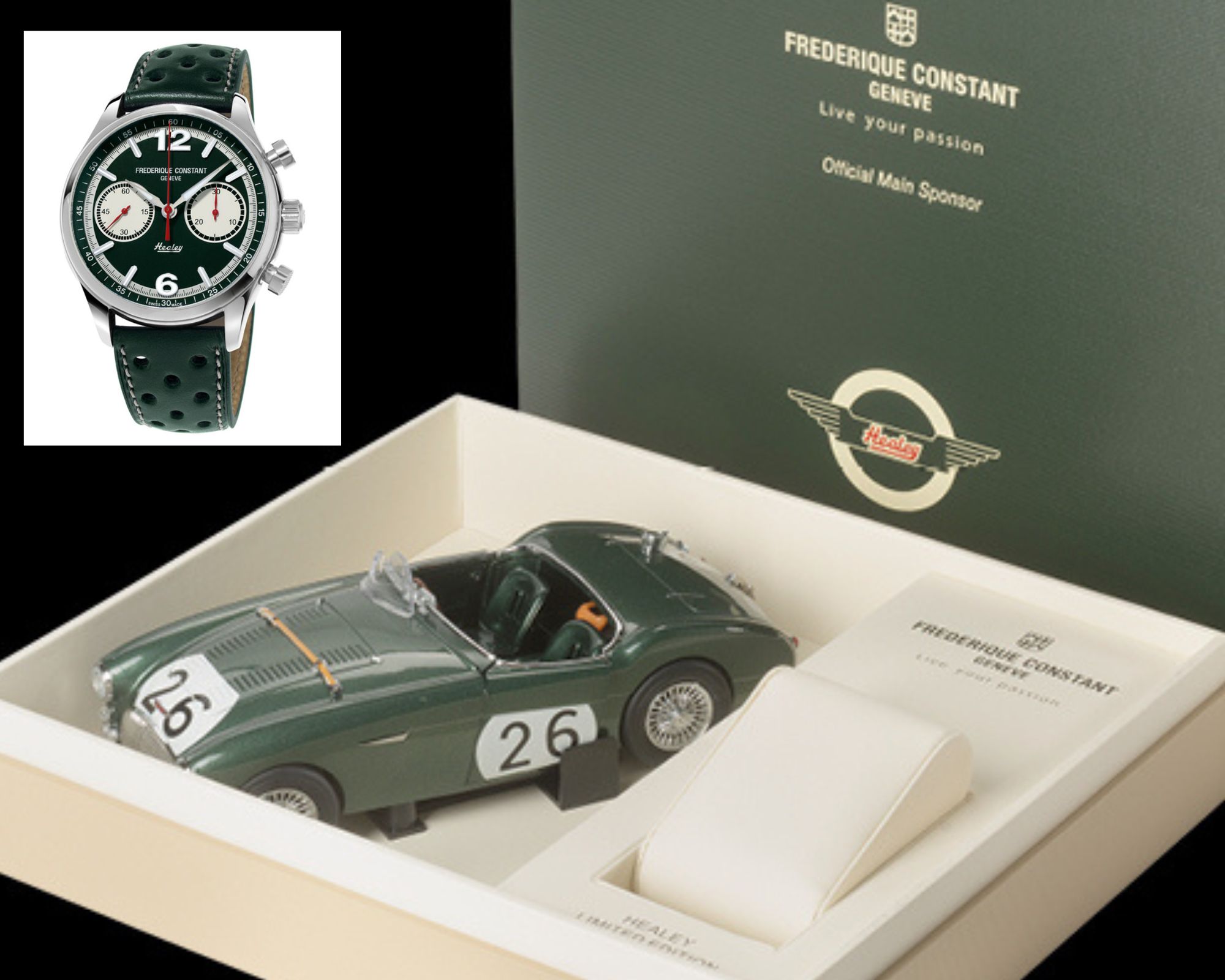 Vintage Rally Healey - Limited Edition Frederique Constant Watch
Vintage Rally Healey - Limited Edition Frederique Constant Watch
